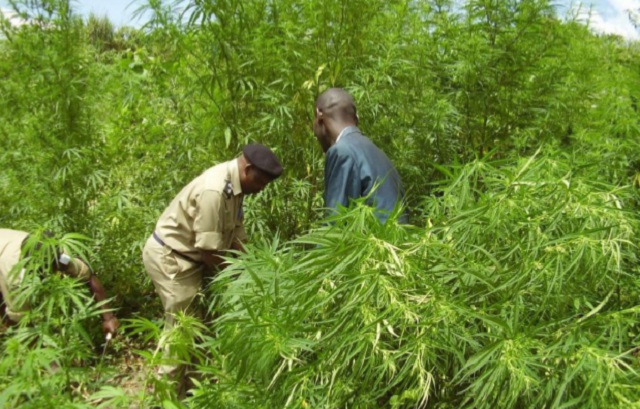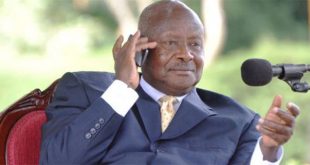
And why it shouldn’t be covered in smoke of secrecy
Kampala, Uganda | PATRICIA AKANKWATSA | Since the government started awarding licences to private companies that are seeking to venture into growing marijuana legally, many users of the drug for recreation have become bolder and convinced about its `goodness’.
28 year old Caleb Kimbugwe, for example, smokes marijuana regularly and has done so for a number of years. But he has smoked it in secret because it is illegal under the law and ostracised by the community as it is associated with criminals.
Under Ugandan law Cannabis, also called Indian hemp and its resin are considered to be narcotic drugs and their usage, production, cultivation, possession, and trafficking is a criminal offence together with heroin, cocaine, and opium.
Under Section 6 of the Narcotic Drugs and Psychotropic Substances (control) Act, no. 3 of 2016, “any person who smokes, inhales, sniffs, chews or otherwise uses any narcotic drug or psychotropic substances” shall be liable on conviction to a fine of between Shs480,000 and Shs2.4 million or to imprisonment of between one year and five years, or both.
Called by names such as enjaga, bangi, ganja, weed and more – including erroneously as opium, marijuana use is frowned upon because it is widely associated with mental sickness. This is partly a result of marijuana effects on its users.
Users typically smoke marijuana as a stick in cigarette form, inhale it as vapour, or consume it via water pipe called bong. Some users claim it helps them meditate, think better, work better, or eat better. But it has also been linked to psychological symptoms like anxiety, paranoia, irritability, insomnia, and panic attacks that have seen some users requiring medical or rehabilitation attention.
Caleb Kimbugwe, however, says marijuana has a relaxing effect on him and does not interfere with his daily life.
He says he started using marijuana in 2009 when he was in high school. He says he was using some other drugs but stopped because his friend got a heart disease from using it. That is how he switched to marijuana.
“I use it when I don’t feel like working or when I don’t want to sleep at night because of unfinished work. It stimulates me,” he says.
More marijuana consumption feared
Caleb is one of the many Ugandans that use marijuana for recreational purposes. According to a recent report by New Frontier Data; a UK-based company dealing in data analytics and business intelligence on the global cannabis industry, up to 2.6 million Ugandans use cannabis. That is 13% of the estimated 20 million Ugandans aged between 15 and 64 years which is the cohort often used in measuring drugs and narcotics usage. That puts Uganda among the top 10 consuming nations of marijuana on the African.
This information is contained in a report titled `The Africa Regional Hemp & Cannabis Report: 2019 Industry Outlook’ released this May. The report found that up to 83 million people in Africa consume marijuana. Nigeria, Ethiopia, Egypt, DR Congo, and Tanzania are the top consuming nations.
In 2014 it was estimated 1that there were 82.5 million marijuana users around the world or 3.8% of the world’s population aged 15–64. That level of consumption puts marijuana just slightly behind consumption of other stimulants like alcohol, caffeine and tobacco.
Although Uganda is already a heavy marijuana user, experts fear the government’s decision to allow commercial production could lead to a surge in usage.
The Ministry Health is already warning that there is reasonable fear that legal cultivation of medical cannabis could lead to an increase of the product, which will lead to the escalation of cannabis abuse and associated consequences. The main issue is the lack of awareness among the public of the difference between medical and recreational marijuana.
Users like Kimbugwe, who grow their own product in a backyard garden or have a small local supplier, possibly do not know that there is medical and recreational marijuana as totally different products.
Tinka Zarugaba, the commissioner for narcotics in the Uganda Police in Uganda says that it is difficult to tell the difference between the plants cultivated for medical marijuana and those for recreational marijuana.
“They look the same,” he says.
Moses Ssemakula, the executive director of the NGO; Mental Health Focus Uganda Ssemakula says the government needs to do more to protect the public from increased marijuana abuse resulting from its commercial cultivation.
“We task government to put in place possible measures and strict laws to make sure that if it’s medical, let it be medical,” he told the Independent in an interview, “Our worry is the product may sneak its way to the public thus causing another threat to the cognitive setup of our young generation.”
According to experts, Cannabis or marijuana has three primary species; cannabis sativa, cannabis indica and cannabis ruderalis. Each of these species has hundreds of chemical compounds but scientists believe the one responsible for making a marijuana user high or get psychoactive effects is the tetrahydrocannabinol or THC.
On the other hand, medical marijuana principally focuses on another chemical called cannabidiol or CBD. Different cannabis species have difference amounts of each chemical. This means that medicinal marijuana producers will typically use cannabis with high CBD. Marijuana from such a species, which includes Indian hemp, does not give a user a high even when smoked. That is because it has THC content as low as 0.3%. Recreational marijuana has THC content as high as 30%. That is what makes a user high.
Even medical marijuana which has high THC content is prepared in such a way that it cannot cause negative effects on the user.
 The Independent Uganda: You get the Truth we Pay the Price
The Independent Uganda: You get the Truth we Pay the Price



